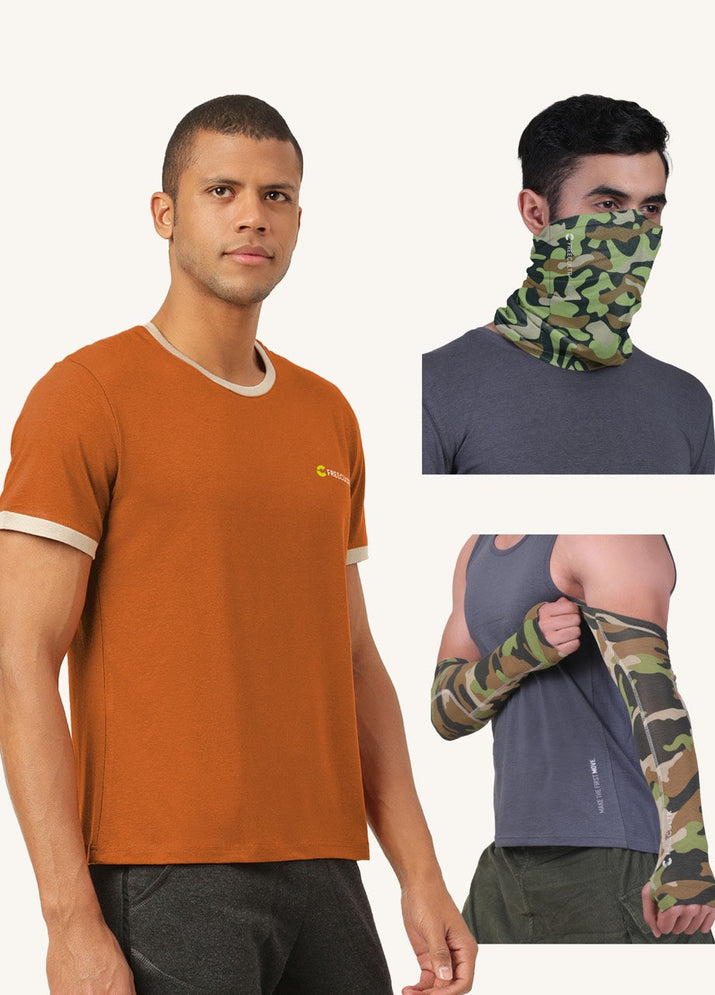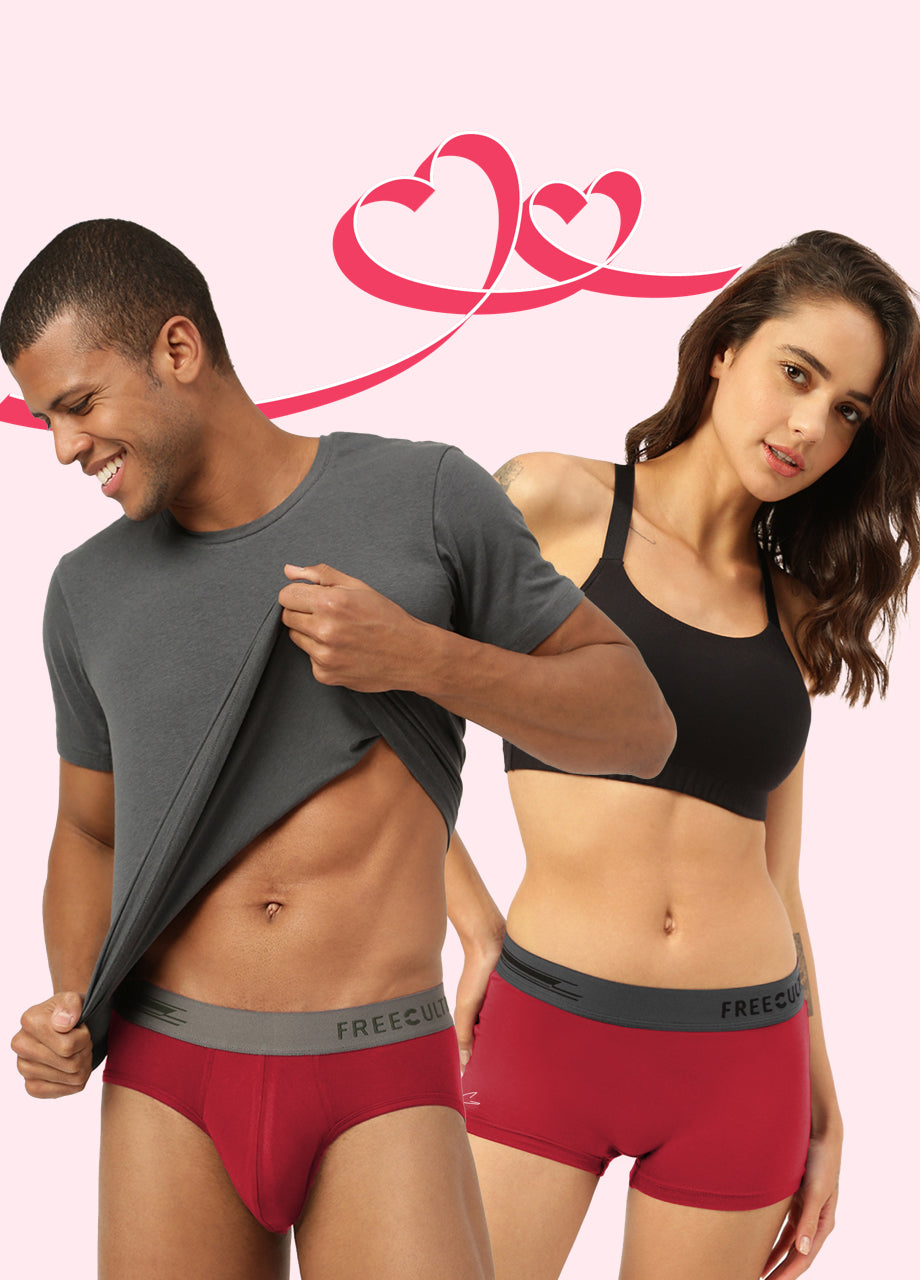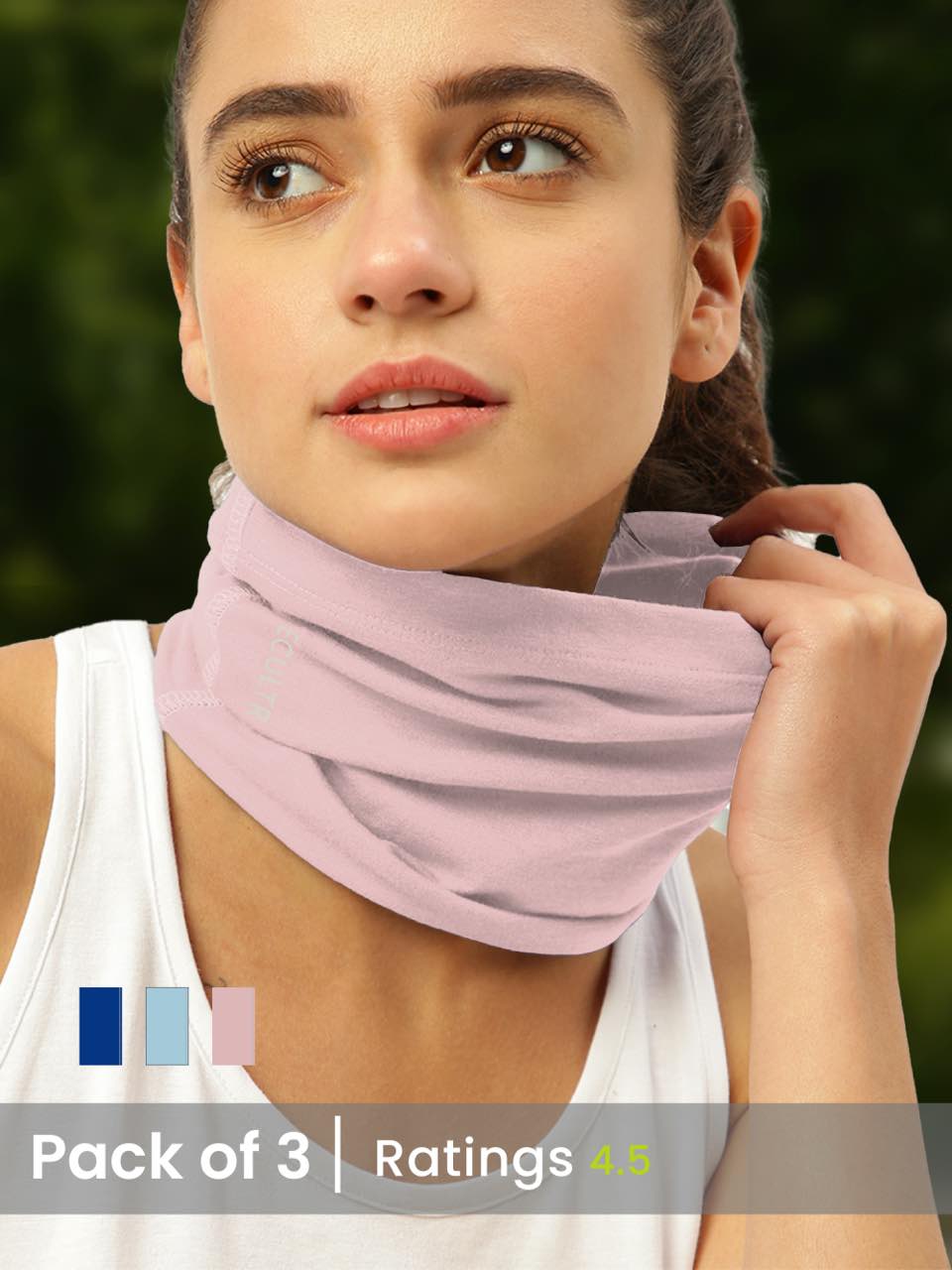Outdoor enthusiasts and professionals increasingly demand gear that offers robust protection against environmental elements. The modern bandana, evolving far beyond its traditional role as a simple accessory, now represents a critical piece of performance apparel. Utilizing advanced textile engineering, contemporary bandanas integrate UPF 50+ sun protection, actively blocking over 98% of harmful UVA and UVB rays—a vital feature for activities like trail running, fishing, or construction work under intense sun. Moreover, sophisticated moisture-wicking polymers rapidly draw perspiration away from the skin, preventing heat buildup and maintaining optimal core temperature, aligning with current trends in high-performance athletic wear. This transformation ensures superior comfort and safety, moving beyond basic coverage to provide essential dermal defense and thermoregulation.

The Enduring Utility of the Bandana
Often perceived as a simple fashion accessory or a relic from the wild west, the bandana is, in fact, an incredibly versatile and functional item with significant benefits for personal protection and comfort. At its core, a bandana is a square piece of cloth, typically made from cotton or a synthetic blend, designed for various uses. Its long history, tracing back centuries across different cultures, underscores its fundamental utility, evolving from practical head covering and signaling device to a modern-day essential for outdoor enthusiasts, athletes. Anyone seeking simple yet effective protection.
Beyond its aesthetic appeal, the bandana serves critical roles, particularly in shielding the wearer from environmental elements. Its lightweight, portable. Adaptable nature makes it an unparalleled tool for managing exposure to sun, heat. Moisture, alongside providing a barrier against dust and debris. Understanding the science behind its protective capabilities reveals why this humble accessory continues to be a staple in many people's everyday carry.
Advanced Sun Protection Capabilities
One of the primary benefits of a bandana, especially when worn on the head, neck, or face, is its ability to offer substantial sun protection. Exposure to ultraviolet (UV) radiation from the sun can lead to sunburn, premature skin aging. An increased risk of skin cancer. While sunscreen is crucial, physical barriers like clothing provide an immediate and consistent defense. The effectiveness of a bandana in blocking UV rays depends largely on its material, weave. Color, which collectively contribute to its Ultraviolet Protection Factor (UPF).
- Understanding UPF UPF is a rating system used for clothing, similar to SPF for sunscreen, indicating how much UV radiation a fabric blocks. A UPF 30 fabric, for instance, allows only 1/30th of the sun's UV rays to pass through. While not all bandanas come with a UPF rating, denser weaves and darker colors generally offer better protection.
- Fabric Density and Weave Tightly woven fabrics, such as those found in many cotton or synthetic blend bandanas, create a more effective physical barrier against UV radiation. The smaller the gaps between threads, the less UV light can penetrate. For example, a loosely woven cheesecloth offers minimal protection compared to a tightly woven denim or a high-thread-count cotton bandana.
- Material Composition Synthetic fibers like polyester or nylon, especially when treated with UV-absorbing chemicals, often provide superior UV protection compared to untreated natural fibers. But, even a standard cotton bandana can offer significant protection if it has a tight weave.
- Color Impact Darker colors tend to absorb more UV radiation than lighter colors, preventing it from reaching the skin. While a white bandana might feel cooler due to reflection, a navy blue or black bandana will generally offer better UV blockage.
For instance, an avid hiker, often navigating exposed trails, might choose to wear a dark-colored, tightly woven polyester bandana around their neck to prevent sunburn, complementing their wide-brimmed hat and sunscreen application. This multi-layered approach to sun protection is highly effective. It's vital to remember that while a bandana provides a valuable layer of defense, it should be part of a broader sun protection strategy that includes sunscreen, seeking shade. Wearing other protective clothing.
Superior Moisture-Wicking Properties
Beyond sun protection, the bandana excels in moisture management, a crucial aspect for comfort and safety in hot or humid conditions, or during physical exertion. The human body cools itself primarily through sweating; as sweat evaporates from the skin, it dissipates heat. But, if sweat accumulates on the skin or saturates clothing, this evaporative cooling process becomes less efficient, leading to discomfort, chafing. Potentially overheating.
Certain bandana materials are engineered to "wick" moisture away from the skin, facilitating rapid evaporation. This process relies on capillary action, where moisture is drawn along the fibers and spread across a larger surface area, allowing it to evaporate more quickly.
- Cotton vs. Synthetics
- Cotton Traditional cotton bandanas are highly absorbent. They soak up sweat effectively, which can be beneficial for short bursts of activity or in moderately warm conditions. But, once saturated, cotton retains moisture, feeling heavy, clammy. Losing its insulating properties. This can lead to a cooling effect in cold weather (undesirable) or reduced evaporative cooling in hot weather.
- Synthetics (Polyester, Microfiber) Modern synthetic bandanas, often made from polyester, nylon, or blends, are specifically designed for moisture-wicking. These fibers are hydrophobic (water-repelling) and engineered with micro-channels that draw moisture from the skin to the fabric's outer surface. This allows the sweat to evaporate rapidly, keeping the skin dry and comfortable. Microfiber, a type of synthetic fiber, is particularly effective due to its extremely fine threads and large surface area.
Consider a construction worker on a hot summer day. A cotton bandana tied around their forehead might absorb sweat. Once soaked, it becomes heavy and less effective. In contrast, a synthetic, moisture-wicking bandana would continuously draw sweat away, keeping their forehead dry, preventing sweat from dripping into their eyes. Promoting efficient cooling. This makes a significant difference in comfort, visibility. Even preventing heat-related illnesses.
To illustrate the difference in material performance, here's a simplified comparison:
| Material Type | Primary Benefit | Moisture Management | Sun Protection (General) | Drying Time |
|---|---|---|---|---|
| Cotton Bandana | Absorbency, Softness | Absorbs and holds moisture; can feel heavy when wet. | Moderate (depends on weave); loses effectiveness when wet. | Slow |
| Polyester/Microfiber Bandana | Moisture Wicking, Durability | Wicks moisture away from skin; dries quickly. | Good to Excellent (often with UPF ratings); maintains effectiveness when wet. | Fast |
Choosing the right bandana material based on your activity and environment is an actionable takeaway. For intense physical activity or hot, humid climates, a synthetic bandana engineered for moisture-wicking will provide superior comfort and performance.
Versatility Beyond the Basics: Multifunctional Bandana Applications
The utility of a bandana extends far beyond sun protection and moisture-wicking, making it an indispensable tool for a wide array of situations. Its simple design belies a remarkable capacity for adaptation.
- Dust and Debris Protection When worn over the mouth and nose, a bandana can provide a rudimentary but effective barrier against inhaled dust, pollen, or other airborne particles, crucial for activities like gardening, cycling on dusty roads, or working in arid environments.
- Hair Management Whether keeping hair out of one's eyes during physical activity or containing it in windy conditions, a bandana serves as an excellent hair tie, headband, or head covering. This is particularly useful for athletes, cooks, or anyone working in conditions where hair management is critical.
- Temperature Regulation Beyond wicking sweat, a bandana can be soaked in cool water and worn around the neck or head to provide an immediate cooling effect through evaporative cooling, offering relief in extreme heat. Conversely, in cooler weather, it can add a thin layer of insulation to the neck or ears.
- Emergency Uses In a pinch, a bandana can be repurposed for various emergency situations. It can serve as a makeshift bandage or tourniquet for minor injuries, a sling to support an injured arm, a signaling flag, a pre-filter for water (to remove large particles before purification), or even as a pot holder for camping.
- Cleaning and Wiping Its absorbent nature also makes a clean bandana useful for wiping sweat, cleaning glasses, or drying small surfaces.
Consider a wilderness survival expert, like those often featured in outdoor publications, who consistently include a bandana in their minimalist gear list. They might use it to filter muddy water before boiling, signal for help, or as a makeshift binding for a sprained ankle. This highlights the bandana's role not just as a comfort item. As a critical piece of survival gear.
Selecting the Optimal Bandana for Your Needs
Given the diverse applications and material variations, choosing the right bandana involves considering several factors to maximize its benefits for sun protection and moisture-wicking, among other uses.
- Material
- 100% Cotton Best for general use, high absorbency, softness, breathability. Comfort in moderate conditions. Good for absorbing sweat but dries slowly.
- Polyester/Synthetic Blends Ideal for high-activity sports or hot/humid climates due to superior moisture-wicking, quick-drying properties. Often integrated UV protection. May feel less natural than cotton.
- Microfiber A type of synthetic, exceptionally good at wicking and quick-drying due to its fine fibers. Often very soft.
- Bamboo A newer option, bamboo fabric offers natural breathability, moisture-wicking. Often has inherent antimicrobial properties. It is also very soft.
- Weave and Thickness For sun protection, opt for a tighter weave and slightly thicker fabric. For maximum breathability and rapid drying for moisture-wicking, a lighter, more open weave might be preferred, though this compromises UV protection.
- Size and Shape Standard bandanas are typically 22x22 inches. Larger sizes offer more coverage for sun protection (e. G. , covering the neck and shoulders) or more versatility for tying in various ways. Tube-style or seamless bandanas (often called buffs) offer continuous coverage without knots and are popular for active use.
- Color As discussed, darker colors generally offer better UV protection by absorbing more radiation. But, darker colors also absorb more heat, which might be a consideration in extremely hot, direct sunlight if not accompanied by good airflow. Lighter colors reflect more heat but may offer less UV protection unless specifically treated or tightly woven.
- UPF Rating If sun protection is a primary concern, look for bandanas or similar headwear explicitly labeled with a UPF rating (e. G. , UPF 30+, UPF 50+). These products have been tested to ensure their protective capabilities.
When selecting a bandana, consider your primary use case. If it's for heavy exertion in the sun, a UPF-rated synthetic bandana would be optimal. If it's for casual wear or light sweat absorption, a classic cotton bandana might suffice. The key is to match the bandana's properties to the demands of your activity and environment.
Maintaining Your Bandana's Performance and Longevity
Proper care of your bandana is essential to maintain its protective and performance-enhancing properties over time. While a bandana is generally a durable item, specific care instructions vary depending on the material.
- Washing Instructions
- Cotton Bandanas Most cotton bandanas can be machine washed with like colors in warm or cold water. Using a mild detergent is usually sufficient. Avoid harsh bleaches unless specifically stated, as they can degrade fabric fibers and colors.
- Synthetic (Polyester, Microfiber) Bandanas These should typically be washed in cold water with a gentle cycle to protect the integrity of the moisture-wicking fibers. Avoid fabric softeners, as they can clog the fabric's pores and reduce its wicking ability. Air drying is often recommended to preserve elasticity and prevent heat damage to synthetic fibers.
- Drying Tips
- Air Drying This is the gentlest method for all bandana types and helps preserve fabric integrity, especially for synthetics. It also saves energy.
- Machine Drying If machine drying, use a low heat setting, especially for synthetics, to prevent shrinkage or damage to the fibers. High heat can degrade elasticity and wicking properties in performance fabrics.
- Longevity and Effectiveness Regular washing is crucial, especially for bandanas used to absorb sweat, to prevent bacterial growth and odors. Over time, repeated washing and exposure to harsh elements can degrade the fabric's integrity and, consequently, its UPF rating or wicking efficiency. Inspect your bandana periodically for thinning spots, holes, or loss of elasticity, which might indicate it's time for a replacement if performance is critical.
By following these simple care guidelines, your bandana will continue to provide reliable sun protection, efficient moisture-wicking. Versatile utility for many adventures to come.
Conclusion
The humble bandana, often underestimated, truly shines as a multi-functional guardian against the elements. We've seen how its advanced fabric technology offers crucial UPF sun protection, essential for minimizing exposure during extended outdoor activities like my recent cycling trip where it shielded my neck from unexpected sunburn. Beyond UV defense, its moisture-wicking properties are a game-changer, keeping you cool and dry whether you're tackling a summer hike or navigating a humid urban jungle. My personal tip? Always stash a bandana in your bag – it’s a compact, stylish problem-solver. Much like the growing trend of minimalist outdoor gear, the bandana embodies efficiency and versatility. It’s more than just an accessory; it’s a proactive step towards comfort and skin health. Embrace this simple yet powerful tool. Experience the freedom of well-protected, moisture-managed adventures.More Articles
Bandana – A Stylish Accessory & Functional HeadwearBandana for Men – Rugged Style & Sun Protection
Sling Bag – Organized Essentials & Urban Mobility
Performance Sleeves – Enhanced Protection & Muscle Support
FAQs
How does this bandana offer 'ultimate sun protection'?
Our bandana is made with UPF 50+ fabric, which means it blocks over 98% of the sun's harmful UVA and UVB rays. This provides superior protection for your skin, reducing the risk of sunburn and long-term sun damage.
So, what's the deal with the moisture-wicking?
It's designed with advanced moisture-wicking technology. This fabric actively pulls sweat away from your skin and transports it to the outer surface of the bandana, where it evaporates quickly. This keeps you feeling dry, cool. Comfortable, even during intense activities.
Is it comfortable for all-day wear, especially in hot weather?
Absolutely! Its lightweight, breathable material combined with the effective moisture-wicking means it won't feel heavy or sticky. It helps regulate your temperature, making it ideal for extended use in warm conditions and preventing that clammy feeling.
Can I use it for different outdoor activities?
Definitely. Whether you're hiking, fishing, cycling, running, gardening, or just enjoying a casual day outside, its protective and cooling properties make it perfect for any activity where you need sun protection and sweat management.
How do I keep it clean?
It's super easy to care for. Just machine wash it with similar colors on a cold cycle and tumble dry on low. Avoid bleach or fabric softeners to maintain its performance features and longevity.
Does it feel heavy or restrictive when worn?
Not at all. It's crafted from an ultra-lightweight, stretchy fabric that provides a comfortable, barely-there feel. It's designed to move with you without any bulk or restriction, making it barely noticeable while providing full coverage.
Will it protect my neck and face from sunburn?
Yes, when worn correctly over your neck and face, it provides excellent coverage. The UPF-rated fabric effectively shields those sensitive areas from direct sunlight, significantly reducing the risk of sunburn and keeping you comfortable.






